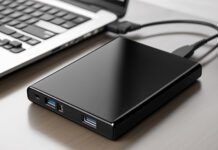Proper mic selection and position is the basis for building a solid mix around your drummer. If you start with these basics, you will have a foundation upon which you can begin to layer the rest of the band.
Microphone selection
This is a very subjective area, and every engineer (and drummer) has his or her preferences. Here is a list of commonly used mics and their applications, not in any particular order.
Kick Drum: AKG D-112E, or the earlier D-12E. Electrovoice RE-20, Beyer M-88, Sennheiser MD-421U, Shure Beta-52, Shure SM-91(regular or beta versions), Audio Technica AT-4060.
Snare Drum: Shure SM-57, or SM-56 (same as 57 but has tilt mount), Audio Technica AT-4053, Audix D-3, AKG D-1000E.
Toms: Sennheiser MD-421U, Sennheiser E-604, Shure SM 98 (or 98-A), AKG 408, Ramsa S-5, Audio Technica AT-4053
Overheads-Hi Hat Shure SM-81, AKG 451, or 460, Audio Technica AT-4051.
Placement
Now let’s talk placement. These would be starting places, but actual placement would depend on how it SOUNDS, not how it looks. And you also have to take into account the comfort for the drummer (as big mics can be intimidating to relaxed playing), and what kind of kit is set up, what kind of stands you are using, etc.
Kick
If there is a hole cut into the front bass drum head, then the mic is inserted about 2″ inside the hole and aimed just off center to the beater. If there is no front head, then place the mic inside the drum about 1 foot in front of the strike head, again aimed just off center. Personally, I have had good luck with an AKG D-112E or EV RE-20 at the hole and a Shure SM-57 placed inside, mixing the two mics together.
Snare
For live sound, I generally don’t mic the bottom of the snare, so let’s talk about top snare placement. With a Shure SM-57, I place it over the snare, next to the mounted tom, almost flat across the drum head, angled down slightly, with the capsule about 1 inch over the head. Any more, and it will get damaged by a stick hit.
If you find it necessary to use a bottom snare drum mic, feel free to. Some guys like it to get extra buzz from the snare strainer or even a different midrange tone. I suggest that you place it under the snare drum, aimed up at the drum at an angle, about 6 inches away from the drum. Keep in mind that this is just a starting place, and you will have to experiment. Make sure you put this mic out of phase if you are using it in addition to a top snare mic.
Toms
Similar to snare micing, only with more of an angle perpendicular to the floor (or head). Even if I have concert toms, I do not mic from the bottom or inside, as there can be problems picking up all of the audio from floor monitors.
Overheads
Up over the cymbals, left and right (I use two), on stage right between the ride cymbal and 1st crash aimed a little towards the other cymbals upstage. On stage left, over the 1st crash, aimed a little towards the other cymbals upstage.
Hi-Hat
Over the hat almost perpendicular to the floor but aimed upstage a bit.
Equalization
Kick
Generally, I roll off 600-800 Hz about 6-10 db and boost a tiny little 3.5 k for some snap (if it’s needed). You may have to noodle around with 2 k a bit to keep the punch, but lose the harshness.
Snare
I usually cut 1 k about 3 db and roll off anything under 600 Hz using the high pass filter, in the mids only. Then I select the 80 Hz or 100 Hz shelf, if it’s available.
Toms
Very similar to the bass drum settings, only you have to cut the low end to cut down on the sustain of the tom, especially if the drummer doesn’t use any muffling. If the low end cut isn’t enough and the toms are out of control, I insert a gate compressor and set the gate at it’s fastest attack with the release point sounding as natural as possible (just like the drum sustain sounds to the drummer), and I compress it about 3:1.
Overheads, Hi-Hat
Generally, I roll off anything below 2 k using the high pass filter or just turning the mids and low EQ’s all the way down, and then I select 4 k or 5 k and boost it 3 db-6 db. I also select the 80 Hz-100 Hz shelf. This works if you want to get the nice high end of the cymbals only, but sometimes I open up the mids a bit if I need to hear some ambience of the toms in these channels too, like if the drummer is using brushes, or Pro Mark Hot Rod type multi dowel sticks. In addition to the above, I have also had success using ONLY a kick mic, and ONE overhead if mics or channels are limited.
Another successful action for me, (but only in venues with carpeted stages) has been to lay a Shure SM-57 on the floor on the beater head side of the bass drum, under the snare, and then used ONE overhead. You’ll be amazed how well this works. Don’t be afraid to move the mics around and listen to see what sounds best to you. Keep in mind that you are amplifying the sound of the drum kit that has been made available to you. If the kit already sounds bad, you will just end up with a LOUDER bad sounding kit. On the other hand, radical EQ’ing can really make up for a lot and “create” a good sounding drum kit.
The key to getting a good drum mix is experimentation with the available microphones and various positions. Take the time during rehearsal to implement different configurations and find the one that works for best for you. Experimentation can be fun, and the sound can be surprising; nonetheless, I hope that these suggestions inevitably provide you with better results.













